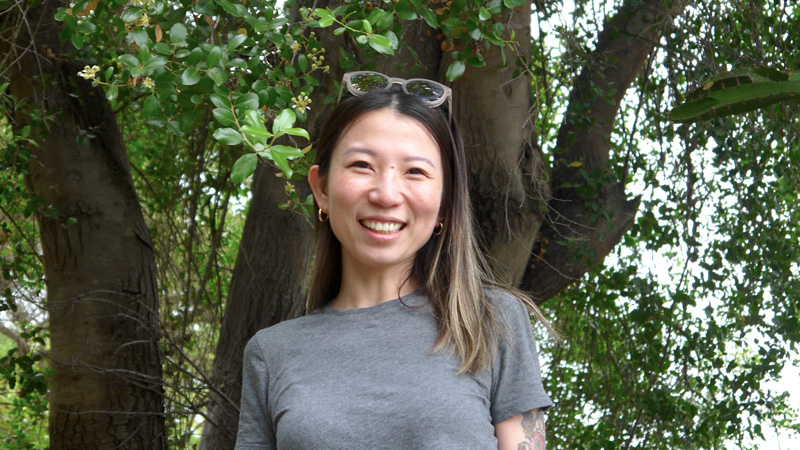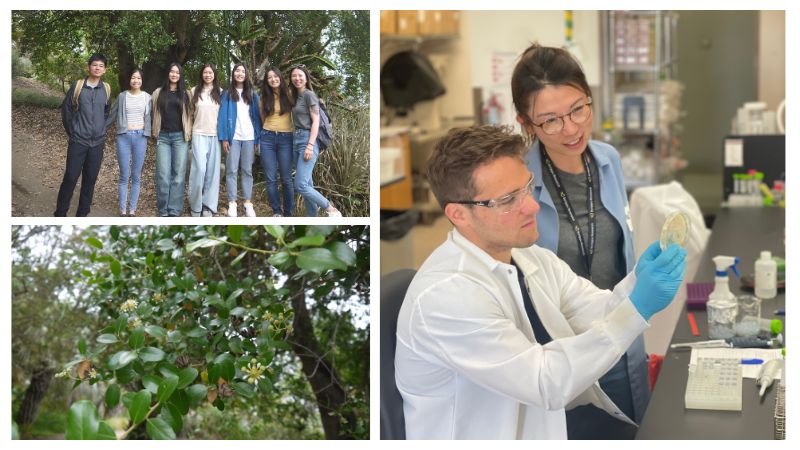
QS-21 is one of the few FDA-approved adjuvants: molecules that improve vaccine effectiveness by boosting the overall immune response. QS-21 is traditionally harvested from trees—the 21st fraction of Quillaja saponaria soapbark tree extract, to be exact—and obtaining the molecule is both arduous and ecologically damaging. To make QS-21 more accessible, assistant chemistry professor Yuzhong Liu, PhD, who recently joined Scripps Research, harnessed her background in synthetic biology to produce this highly sought-after molecule in yeast. These findings from her postdoctoral work at the University of California, Berkeley were published in Nature in May 2024.
Read on to learn more about Liu’s sustainable approach to vaccinology, as well as how she approaches both environmental and public health challenges.

What was the impetus for harvesting QS-21 from yeast?
QS-21 is an FDA-approved adjuvant for shingles, malaria and COVID-19 vaccines. It is the most potent of a small number of vaccine adjuvants approved to date, but accessing large quantities remains a major challenge. Commercially, QS-21 is sourced from the bark of soapbark trees that only produce the natural product in specific areas of Chile, and only once trees are at least 30 years old. Extraction and isolation are highly laborious, low yielding and unsustainable. The number of trees that need to be cut down to meet the demand for QS-21 is so large that the Chilean government was forced to introduce legislature to counter the ensuing deforestation. My research team aimed to source QS-21 in a more sustainable way to reduce the environmental impact while also increasing the amounts that can be produced to meet the ever-growing demand. Specifically, as we ramp up global immunization programs for infectious disease and future pandemics, access to QS-21 has become more important than ever before.
It is possible to make QS-21 chemically, but the synthesis takes more than 100 steps to yield the final product. This drives up the cost and makes the process incompatible with industrial-scale production. The reliance on isolation from natural sources is the main cause for the high cost of $1,000 per milligram of QS-21—well over $100 million per kilogram. Now, as we demonstrate in our work, we have copied the entire biosynthetic QS-21 gene cluster and pasted it into the genome of Saccharomyces cerevisiae—baker’s yeast. Similar to the fermentation process to make beer, the modified yeast strain can be used to “brew” QS-21 from cheap, simple sugars. Production in yeast provides a sustainable source of QS-21, increases the yield by at least 1,000 times, and shortens the production time from decades to days.
Were you surprised that your research team could successfully engineer QS-21 in yeast?
At the outset of the project, we were very aware that the completion of the full biosynthesis of QS-21 was a long shot. Given its complexity, the biosynthetic pathway had not been deciphered until only recently. The biosynthesis comprises 38 enzymes of seven distinct classes, many of which are notoriously difficult to express in yeast. You have to remember that trees and yeast are from different kingdoms of life. As a result, we had to source genes from different organisms to account for the fact that plant enzymes often do not functionally express in yeast. Ultimately, we ended up using genes from six different organisms. It is, without a doubt, the longest and most complex biosynthetic pathway ever to be reconstituted in a microbial host.
There is a very fine line between challenging and impossible, and we were dancing dangerously close to that line. But in the end, all the stars aligned, and we were able to make this molecule.
How does this study tie into to your current research trajectory?
QS-21 is only one of the many natural products that exhibit immunoregulatory properties. In my lab at Scripps Research, we aim to understand the molecular basis for adjuvanticity and toxicity of these compounds to make next-generation adjuvants with enhanced potency and attenuated side-effects. Similar to QS-21, many bioactive natural products exist at very low concentrations in their native host organism, making extraction and purification difficult. My lab is working on reconstituting these biosynthetic pathways in yeast to increase the availability of complex natural products and accelerate the characterization of their immunoregulatory properties. The overarching goal of my research program is to identify and produce better and safer vaccine adjuvant candidates that are affordable and available to everyone.
What has it been like working for Scripps Research thus far?
I enjoy it here very much. Tackling outstanding challenges in our area of research requires my lab to work at the interface of chemistry, synthetic biology and immunology—and Scripps Research is uniquely positioned to facilitate such interdisciplinary endeavors. Staying true to the institute’s slogan “Science Changing Life,” our work allows us to bridge the gap between basic science and translational medicine. The fact that you can drive new, abstract ideas all the way from bench to bedside is a unique opportunity to actually make a societal impact.
The weather is great, as are the people—you never eat lunch by yourself. Everyone is truly collaborative, which creates a stimulating environment to generate new ideas. From both scientific and personal perspectives, this is definitely the best place for me, and I am grateful that I made the decision to join the institute.